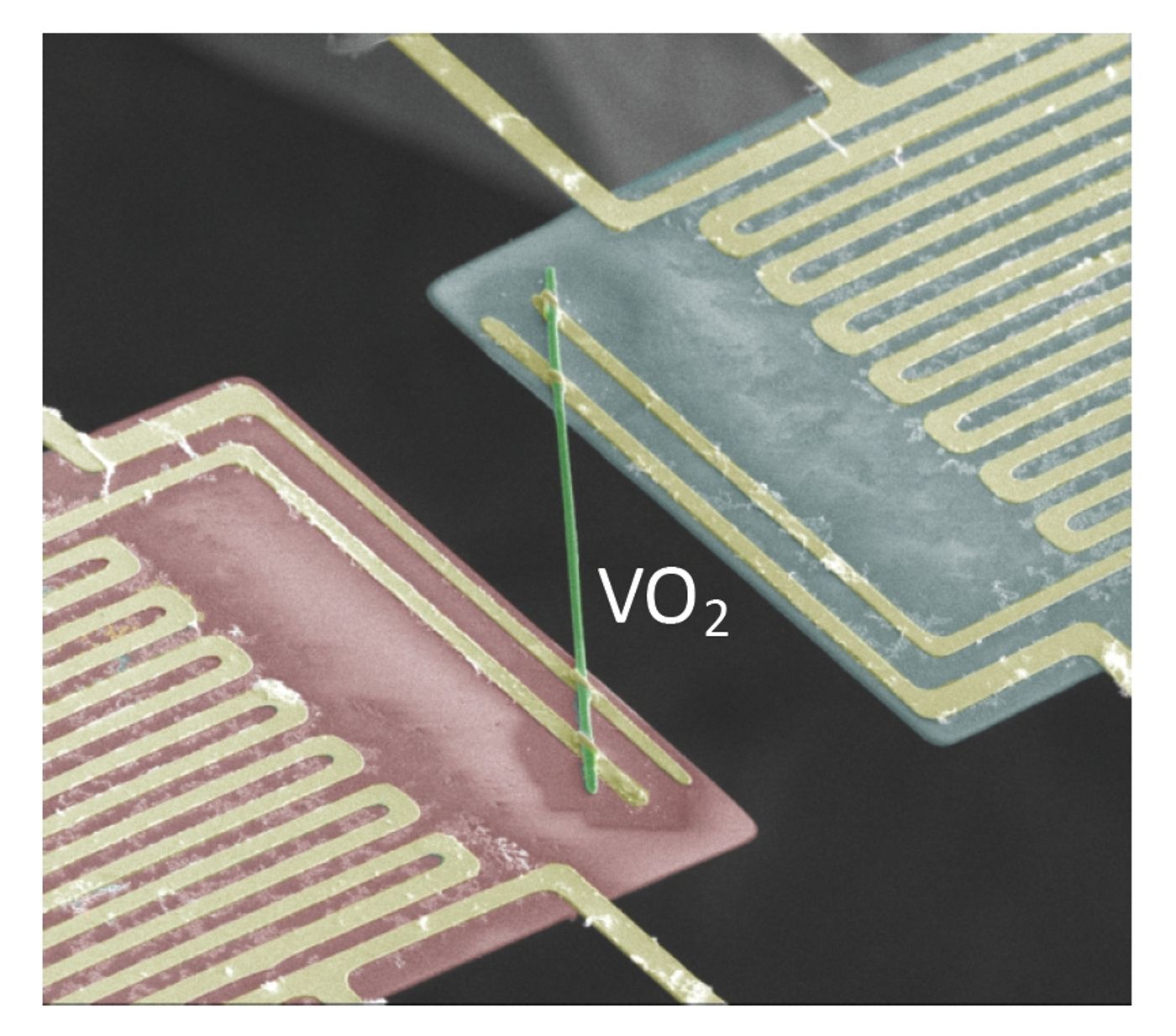Metal that Conducts Electricity But Not Heat
Metals are known as good conductors of both heat and electricity. Regardless of temperature or other factors, typical conductivity does not change. This property is known as the Wiedemann-Franz Law. Essentially, the law states that good conductors of electricity are also good conductors of heat.
Scientists at the Department of Energy’s Lawrence Berkeley National Laboratory (Berkeley Lab) and at the University of California, Berkeley have found a metal that counteracts this law. Vanadium dioxide is a good conductor of electricity but not of heat.
Vanadium dioxide is already known to have unusual characteristics, and can convert from an insulator to a metal at 67 degrees Celsius. But when studying vanadium dioxide’s properties, the team was able to delve further into how the material is so unique by investigating not only the crystal lattice structure of the material but also the movement of electrons. This is important in the conduction of heat, which occurs through metals by the random movement of electrons. However, in vanadium dioxide, the electron movement is much more structured so heat is not able move through efficiently.
“The electrons were moving in unison with each other, much like a fluid, instead of as individual particles like in normal metals,” said Wu. “For electrons, heat is a random motion. Normal metals transport heat efficiently because there are so many different possible microscopic configurations that the individual electrons can jump between. In contrast, the coordinated, marching-band-like motion of electrons in vanadium dioxide is detrimental to heat transfer as there are fewer configurations available for the electrons to hop randomly between.”
Collaboration between Wu’s lab at LBL and Olivier Delaire at DOE’s Oak Ridge National Laboratory and an associate professor at Duke University allowed the team for perform simulations and X-ray scattering experiments to work out how much thermal conductivity the vanadium dioxide had based on its electron movement. They found that the thermal conductivity coming from electrons is ten times smaller than what would be expected from the Wiedemann-Franz Law.
In an interesting turn, the thermal and electrical conductivity of the material can be adjusted by mixing the metal with other materials, like tungsten. The mix of materials changes the temperature at which the vanadium dioxide becomes metallic. This change in temperature can convert the material into a better heat conductor at certain temperatures and back to an insulator at others.
“By tuning its thermal conductivity, the material can efficiently and automatically dissipate heat in the hot summer because it will have high thermal conductivity, but prevent heat loss in the cold winter because of its low thermal conductivity at lower temperatures,” explains co-lead author Fan Yang, a postdoctoral researcher at Berkeley Lab’s Molecular Foundry.
The material and its mixes have applications in helping dissipate heat in engines, or being integrated into a window coating to improve the energy efficiency in buildings. More needs to be learned about the material before it is used in commercial applications, but the findings stimulate new interest in creating materials with new properties.
Sources: Lawrence Berkeley Labs, Science









